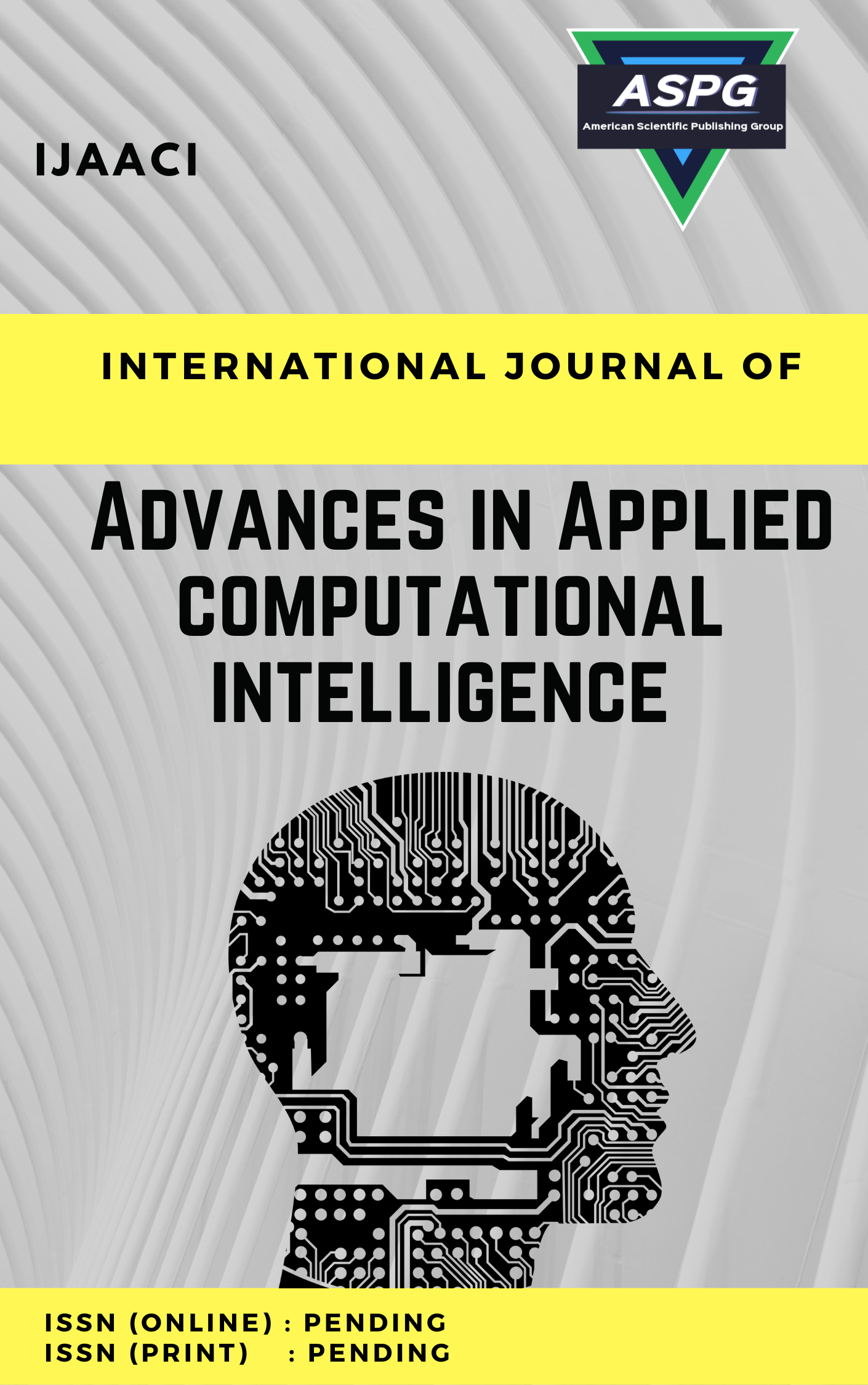

Volume 3 , Issue 2 , PP: 38-47, 2023 | Cite this article as | XML | Html | PDF | Full Length Article
Alshaimaa A. Tantawy 1 *
Doi: https://doi.org/10.54216/IJAACI.030204
Predicting a person's person fat percentage is an important part of keeping tabs on their health and fitness. An accurate assessment of person fat allows for the development of individualized programmer for health and wellbeing, the promotion of illness prevention, and the evaluation of the efficacy of weight management initiatives. This study reviews the current state of the art in person fat prediction approaches, which includes the use of machine learning algorithms. Obesity is a chronic condition characterized by high levels of person fat and is linked to several health issues. Since several methods exist for estimating person fat percentage to evaluate obesity, these assessments are usually expensive and need specialized equipment. Therefore, determining obesity and its associated disorders requires an accurate estimate of person fat proportion according to readily available person measures. This paper presented a machine-learning model for forecasting person fat. This problem is a regression, so this paper used two regression models to deal with the regression dataset. This paper used linear regression (LR) and k nearest neighbors (KNN). The two models were applied to real datasets. The dataset has 252 records. The results showed the LR has the highest score than the KNN model.
Machine Learning , Linear Regression , K Nearest Neighbors , person Fat , Prediction , Regression Problem.
[1] P. Costa-Urrutia et al., “Obesity measured as percent person fat, relationship with person mass index, and percentile curves for Mexican pediatric population,” PLoS One, vol. 14, no. 2, p. e0212792, 2019.
[2] L. A. Fowler, J. R. Fernández, S. E. Deemer, and B. A. Gower, “Genetic risk score prediction of leg fat and insulin sensitivity differs by race/ethnicity in early pubertal children,” Pediatr. Obes., vol. 16, no. 12, p. e12828, 2021.
[3] A. M. Barberio et al., “Central person fatness is a stronger predictor of cancer risk than overall person size,” Nat. Commun., vol. 10, no. 1, p. 383, 2019.
[4] O. O. Woolcott and R. N. Bergman, “Relative Fat Mass as an estimator of whole-person fat percentage among children and adolescents: A cross-sectional study using NHANES,” Sci. Rep., vol. 9, no. 1, p. 15279, 2019.
[5] S. M. Alwash, H. D. McIntyre, and A. Mamun, “The association of general obesity, central obesity and visceral person fat with the risk of gestational diabetes mellitus: Evidence from a systematic review and meta-analysis,” Obes. Res. Clin. Pract., vol. 15, no. 5, pp. 425–430, 2021.
[6] I.-E. Jurca-Simina et al., “What if person fat percentage association with FINDRISC score leads to a better prediction of type 2 diabetes mellitus,” Rom J Morphol Embryol, vol. 60, no. 1, pp. 205–210, 2019.
[7] D. G. Whitney, F. Miller, R. T. Pohlig, and C. M. Modlesky, “BMI does not capture the high fat mass index and low fat-free mass index in children with cerebral palsy and proposed statistical models that improve this accuracy,” Int. J. Obes., vol. 43, no. 1, pp. 82–90, 2019.
[8] S. Delle Monache et al., “Person mass index represents a good predictor of vitamin D status in women independently from age,” Clin. Nutr., vol. 38, no. 2, pp. 829–834, 2019.
[9] M. T. Hudda et al., “Development and validation of a prediction model for fat mass in children and adolescents: meta-analysis using individual participant data,” bmj, vol. 366, 2019.
[10] N. Stefan, “Causes, consequences, and treatment of metabolically unhealthy fat distribution,” lancet Diabetes Endocrinol., vol. 8, no. 7, pp. 616–627, 2020.
[11] K.-A. Shin and Y.-J. Kim, “Usefulness of surrogate markers of person fat distribution for predicting metabolic syndrome in middle-aged and older Korean populations,” Diabetes, Metab. Syndr. Obes. targets Ther., pp. 2251–2259, 2019.
[12] C.-L. Hsu et al., “Role of fatty liver index and metabolic factors in the prediction of nonalcoholic fatty liver disease in a lean population receiving health checkup,” Clin. Transl. Gastroenterol., vol. 10, no. 5, 2019.
[13] Y. Xu and L. Wang, “A weighted twin support vector regression,” Knowledge-Based Syst., vol. 33, pp. 92–101, 2012.
[14] A. Kupusinac, E. Stokić, and R. Doroslovački, “Predicting person fat percentage based on gender, age and BMI by using artificial neural networks,” Comput. Methods Programs Biomed., vol. 113, no. 2, pp. 610–619, 2014.
[15] Y. Wang, W. Pang, and Z. Jiao, “An adaptive mutual K-nearest neighbors clustering algorithm based on maximizing mutual information,” Pattern Recognit., vol. 137, p. 109273, 2023.
[16] T. Adithiyaa, D. Chandramohan, and T. Sathish, “Optimal prediction of process parameters by GWO-KNN in stirring-squeeze casting of AA2219 reinforced metal matrix composites,” Mater. Today Proc., vol. 21, pp. 1000–1007, 2020.
[17] S. N. Betgeri, S. R. Vadyala, J. C. Matthews, M. Madadi, and G. Vladeanu, “Wastewater pipe condition rating model using K-nearest neighbors,” Tunn. Undergr. Sp. Technol., vol. 132, p. 104921, 2023.
[18] D. N. Cosenza et al., “Comparison of linear regression, k-nearest neighbour and random forest methods in airborne laser-scanning-based prediction of growing stock,” For. An Int. J. For. Res., vol. 94, no. 2, pp. 311–323, 2021.
[19] C. Feng, B. Zhao, X. Zhou, X. Ding, and Z. Shan, “An Enhanced Quantum K-Nearest Neighbor Classification Algorithm Based on Polar Distance,” Entropy, vol. 25, no. 1, p. 127, 2023.
[20] H. I. Dino and M. B. Abdulrazzaq, “Facial expression classification based on SVM, KNN and MLP classifiers,” in 2019 International Conference on Advanced Science and Engineering (ICOASE), IEEE, 2019, pp. 70–75.
[21] Mona Mohamed, Intelligent Fat Predictor: Leveraging Linear Regression and K Nearest Neighbors in Obesity diseases., International Journal of Advances in Applied Computational Intelligence, Vol. 3 , No. 1 , (2023) : 08-18 (Doi : https://doi.org/10.54216/IJAACI.030101)
[22] N. D. Mu’azu and S. O. Olatunji, “K-nearest neighbor based computational intelligence and RSM predictive models for extraction of Cadmium from contaminated soil,” Ain Shams Eng. J., vol. 14, no. 4, p. 101944, 2023.